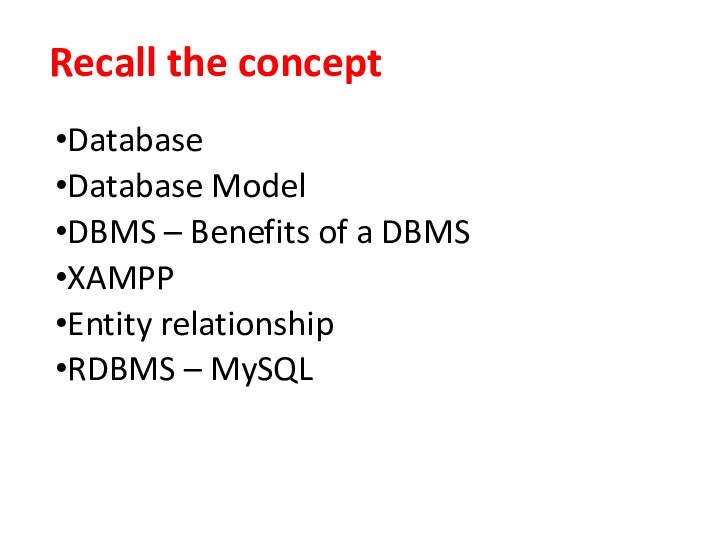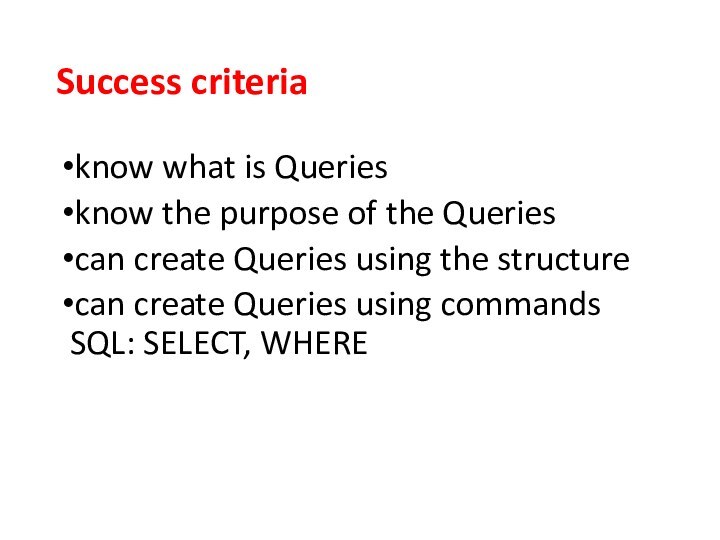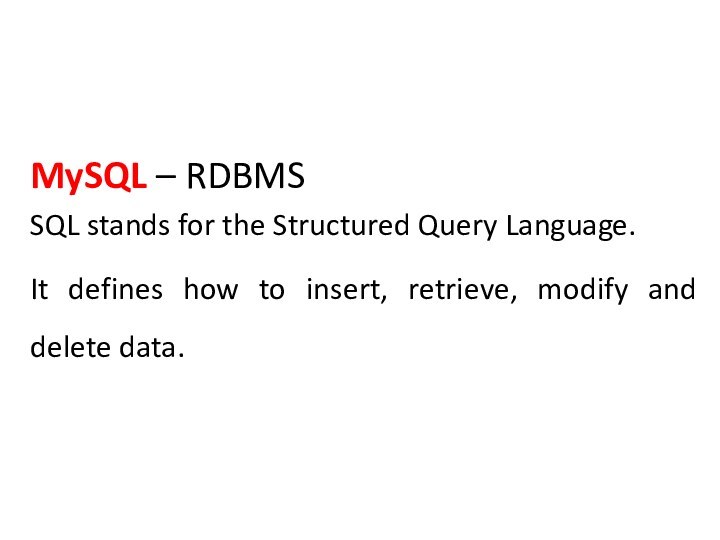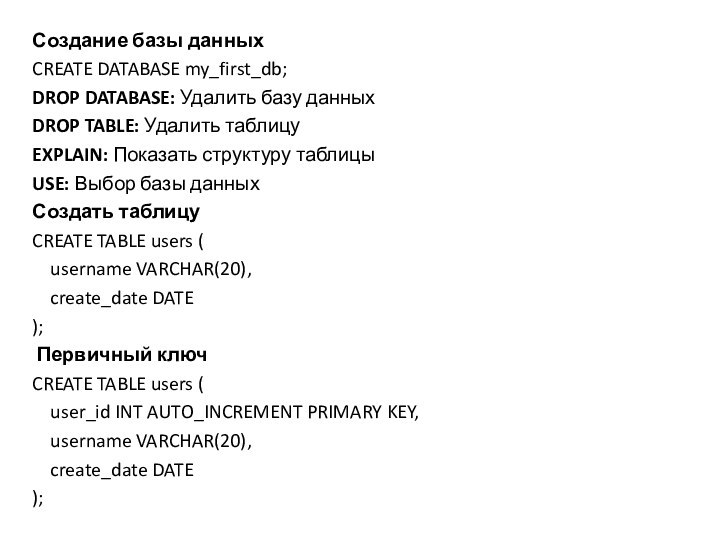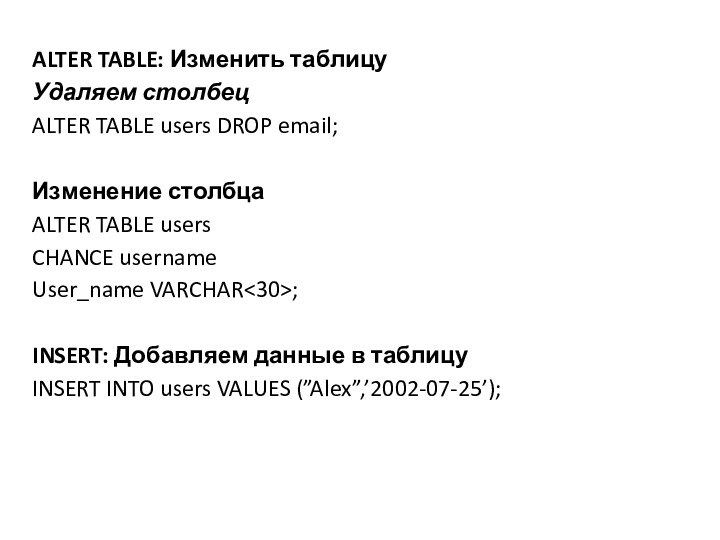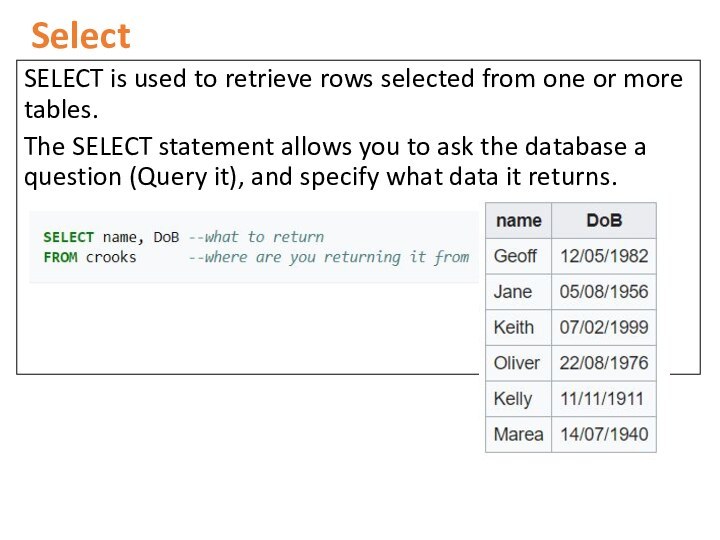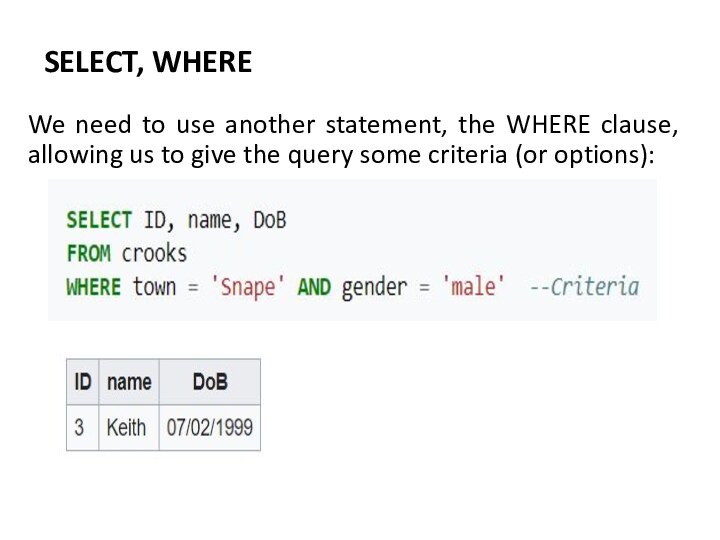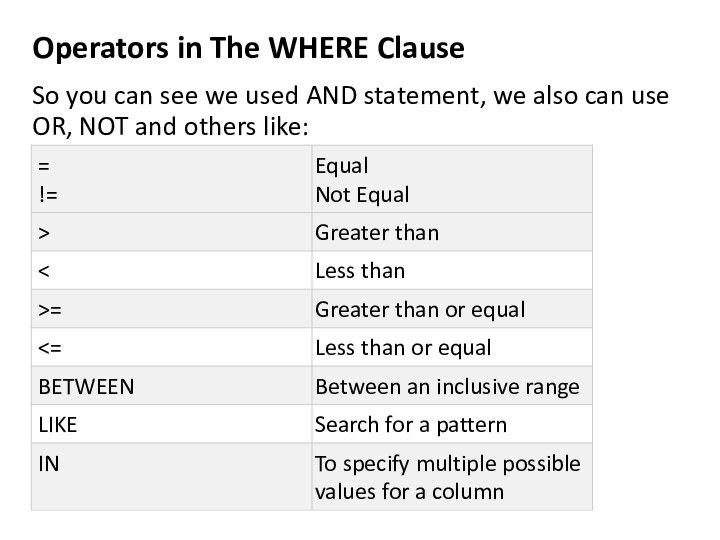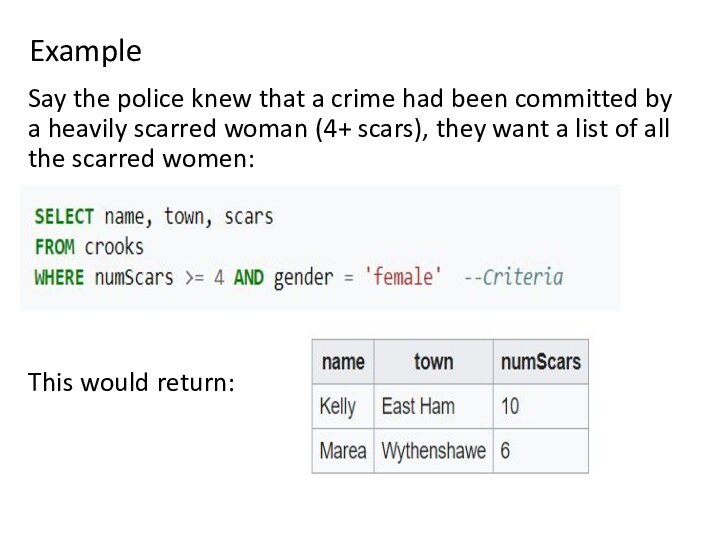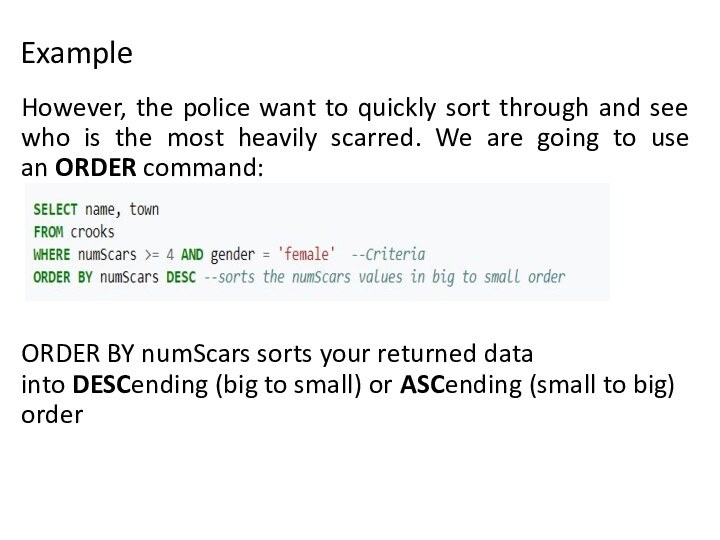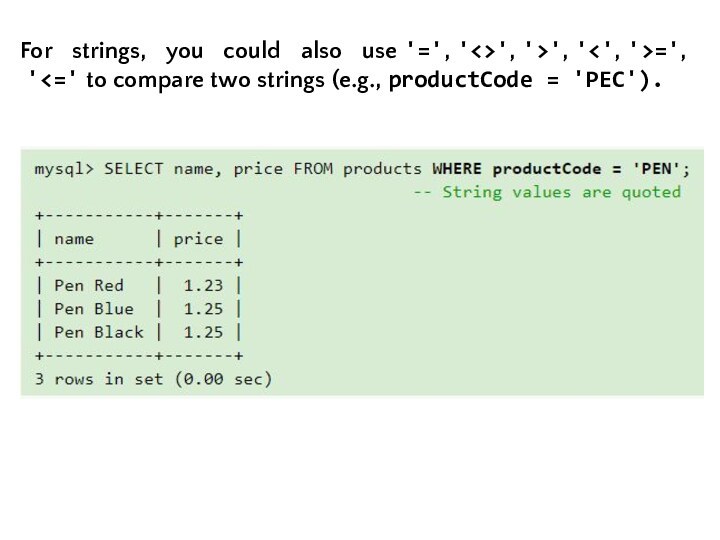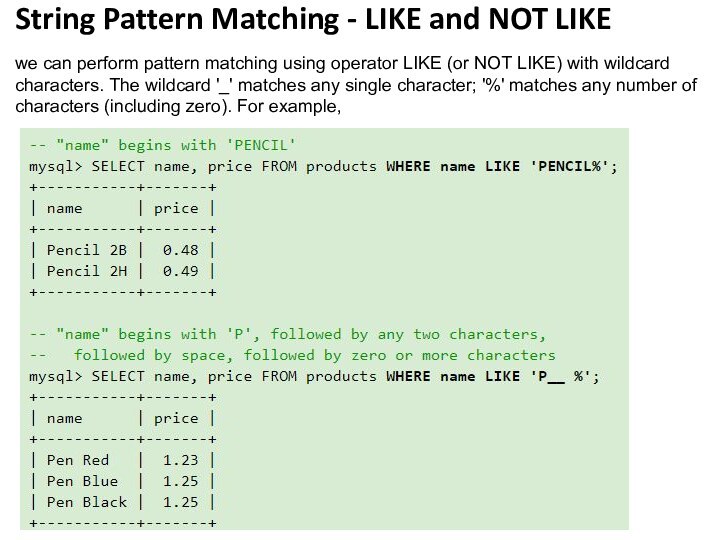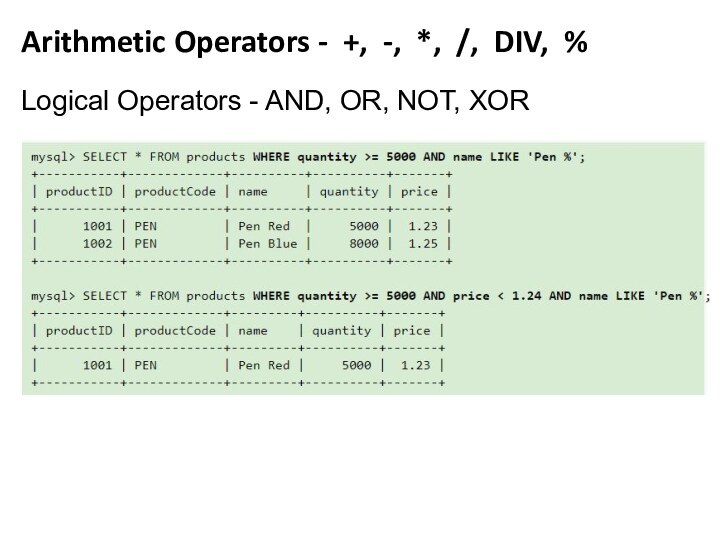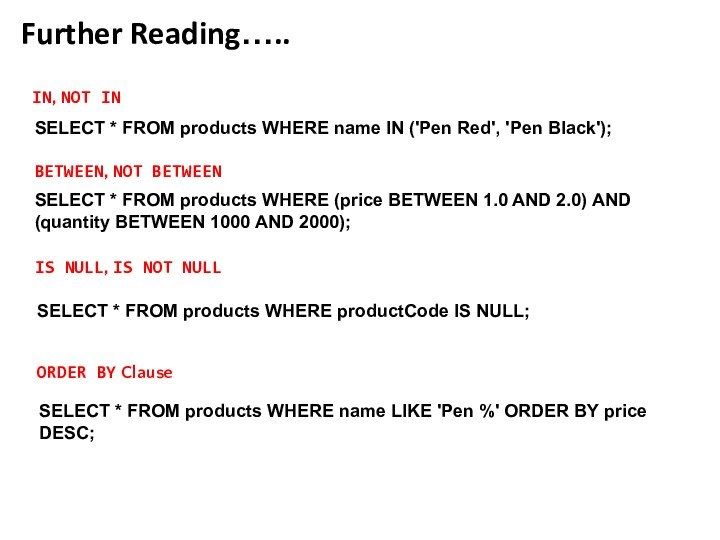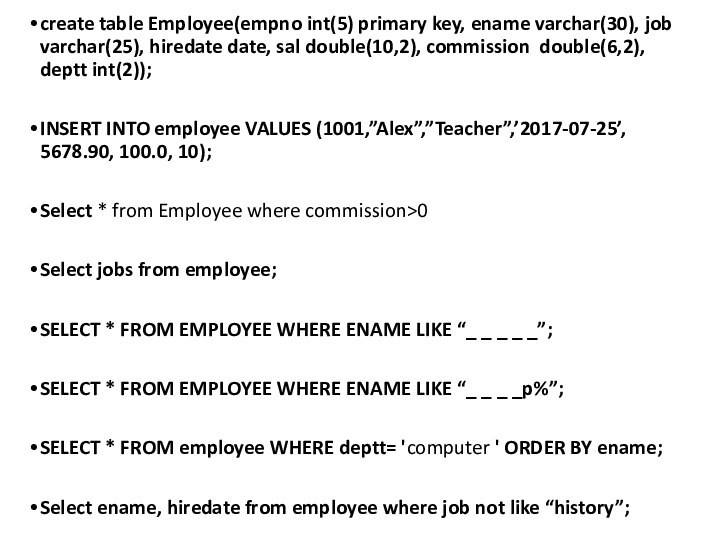Слайд 2
Learning Objective:
Create, evaluate and improve search queries that
use multiple criteria and relational operators to find specific
information
Queries
Слайд 3
Success criteria
know what is Queries
know the purpose of
the Queries
can create Queries using the structure
can create Queries
using commands SQL: SELECT, WHERE
Слайд 4
MySQL – RDBMS
SQL stands for the Structured Query
Language.
It defines how to insert, retrieve, modify and delete
data.
Слайд 5
Создание базы данных
CREATE DATABASE my_first_db;
DROP DATABASE: Удалить базу
данных
DROP TABLE: Удалить таблицу
EXPLAIN: Показать структуру таблицы
USE: Выбор базы
данных
Создать таблицу
CREATE TABLE users (
username VARCHAR(20),
create_date DATE
);
Первичный ключ
CREATE TABLE users (
user_id INT AUTO_INCREMENT PRIMARY KEY,
username VARCHAR(20),
create_date DATE
);
Слайд 6
ALTER TABLE: Изменить таблицу
Удаляем столбец
ALTER TABLE users DROP
email;
Изменение столбца
ALTER TABLE users
CHANCE username
User_name VARCHAR;
INSERT: Добавляем данные в
таблицу
INSERT INTO users VALUES (”Alex”,’2002-07-25’);
Слайд 7
Select
SELECT is used to retrieve rows selected from one
or more tables.
The SELECT statement allows you to ask
the database a question (Query it), and specify what data it returns.
Слайд 8
SELECT, WHERE
We need to use another statement, the
WHERE clause, allowing us to give the query some
criteria (or options):
Слайд 9
Operators in The WHERE Clause
So you can see
we used AND statement, we also can use OR,
NOT and others like:
Слайд 10
Example
Say the police knew that a crime had
been committed by a heavily scarred woman (4+ scars),
they want a list of all the scarred women:
This would return:
Слайд 11
Example
However, the police want to quickly sort through
and see who is the most heavily scarred. We
are going to use an ORDER command:
ORDER BY numScars sorts your returned data into DESCending (big to small) or ASCending (small to big) order
Слайд 12
Select with Comparison Operators
For numbers (INT, DECIMAL, FLOAT)
Слайд 13
For strings, you could also use '=', '', '>', '=',
'
strings (e.g., productCode = 'PEC').
Слайд 14
String Pattern Matching - LIKE and NOT LIKE
we can perform pattern
matching using operator LIKE (or NOT LIKE) with wildcard
characters. The wildcard '_' matches any single character; '%' matches any number of characters (including zero). For example,
Слайд 15
Arithmetic Operators - +, -, *, /, DIV,
%
Logical Operators - AND, OR, NOT, XOR
Слайд 16
Further Reading…..
IN, NOT IN
BETWEEN, NOT BETWEEN
IS NULL, IS NOT NULL
ORDER BY Clause
SELECT
* FROM products WHERE name IN ('Pen Red', 'Pen
Black');
SELECT * FROM products WHERE (price BETWEEN 1.0 AND 2.0) AND (quantity BETWEEN 1000 AND 2000);
SELECT * FROM products WHERE productCode IS NULL;
SELECT * FROM products WHERE name LIKE 'Pen %' ORDER BY price DESC;
Слайд 17
create table Employee(empno int(5) primary key, ename varchar(30),
job varchar(25), hiredate date, sal double(10,2), commission double(6,2), deptt
int(2));
INSERT INTO employee VALUES (1001,”Alex”,”Teacher”,’2017-07-25’, 5678.90, 100.0, 10);
Select * from Employee where commission>0
Select jobs from employee;
SELECT * FROM EMPLOYEE WHERE ENAME LIKE “_ _ _ _ _”;
SELECT * FROM EMPLOYEE WHERE ENAME LIKE “_ _ _ _p%”;
SELECT * FROM employee WHERE deptt= 'computer ' ORDER BY ename;
Select ename, hiredate from employee where job not like “history”;
